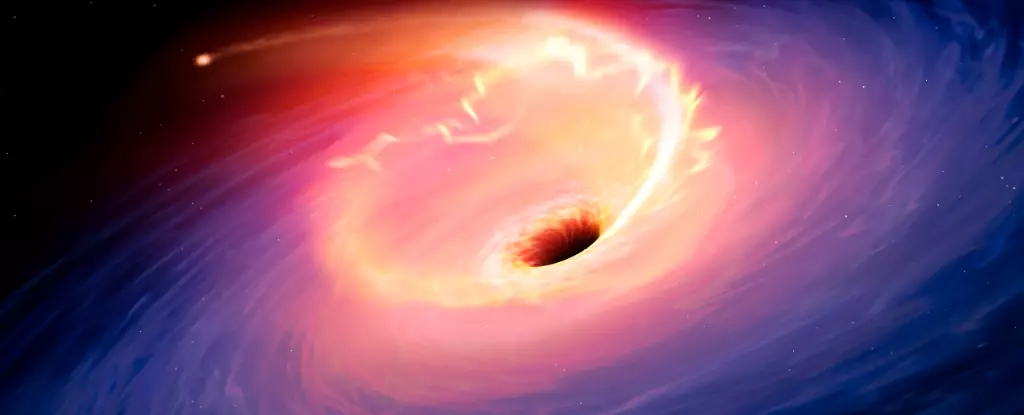Black holes are known for their destructive nature towards stars that wander too close to them. The typical scenario involves a star being engulfed by the black hole, resulting in a dramatic death marked by intense X-ray and UV emissions. However, in rare instances, stars can be captured in an orbit around a black hole, leading to a slower and more prolonged demise. A recent study delves into the phenomenon of a star being slowly devoured by a supermassive black hole located at the center of a distant galaxy. This unique case presents an opportunity for astronomers to gain insights into various physical processes.
The journey into understanding stars orbiting black holes began with the detection of AT2018fyk, a “tidal disruption event” (TDE), in 2018. This event, where a star is consumed by a black hole, was initially observed by NASA’s Neutron star Interior Composition Explorer (NICER) and further studied using Chandra and XMM-Newton telescopes. The follow-up investigations revealed fascinating details about the star’s interaction with the black hole, setting the stage for a series of revelations.
Ongoing Observations and Predictions
After the initial consumption of the star by the black hole, astronomers noticed a second surge in X-ray and UV emissions coming from the same celestial body approximately two years later. This phenomenon indicated that the captured star was being partially devoured again as it orbited the black hole in an elliptical path. Scientists predicted the eventual end of this process to be in August 2023 and successfully observed a significant decrease in emission on that date. This decrease signaled either the complete destruction of the star or its escape from the black hole’s grasp, continuing its eccentric dance around the massive entity.
The ongoing saga of the star orbiting the black hole raises intriguing questions about the nature of binary star systems and the gravitational dynamics at play in such scenarios. Researchers speculate that the star’s partner, which was ejected from the system, could have significant implications for its trajectory within the galaxy. The possibility of a third round of luminous burnoff between May and August of 2025 presents an exciting opportunity to further explore the system’s behavior and evolution.
As astronomers continue to study the unique phenomenon of stars being captured in orbits around black holes, the insights gained from such observations contribute greatly to our understanding of the universe’s complex mechanisms. The ongoing research on AT2018fyk and its interactions with the supermassive black hole serve as a testament to the intriguing discoveries awaiting exploration in the realm of astrophysics.


Leave a Reply